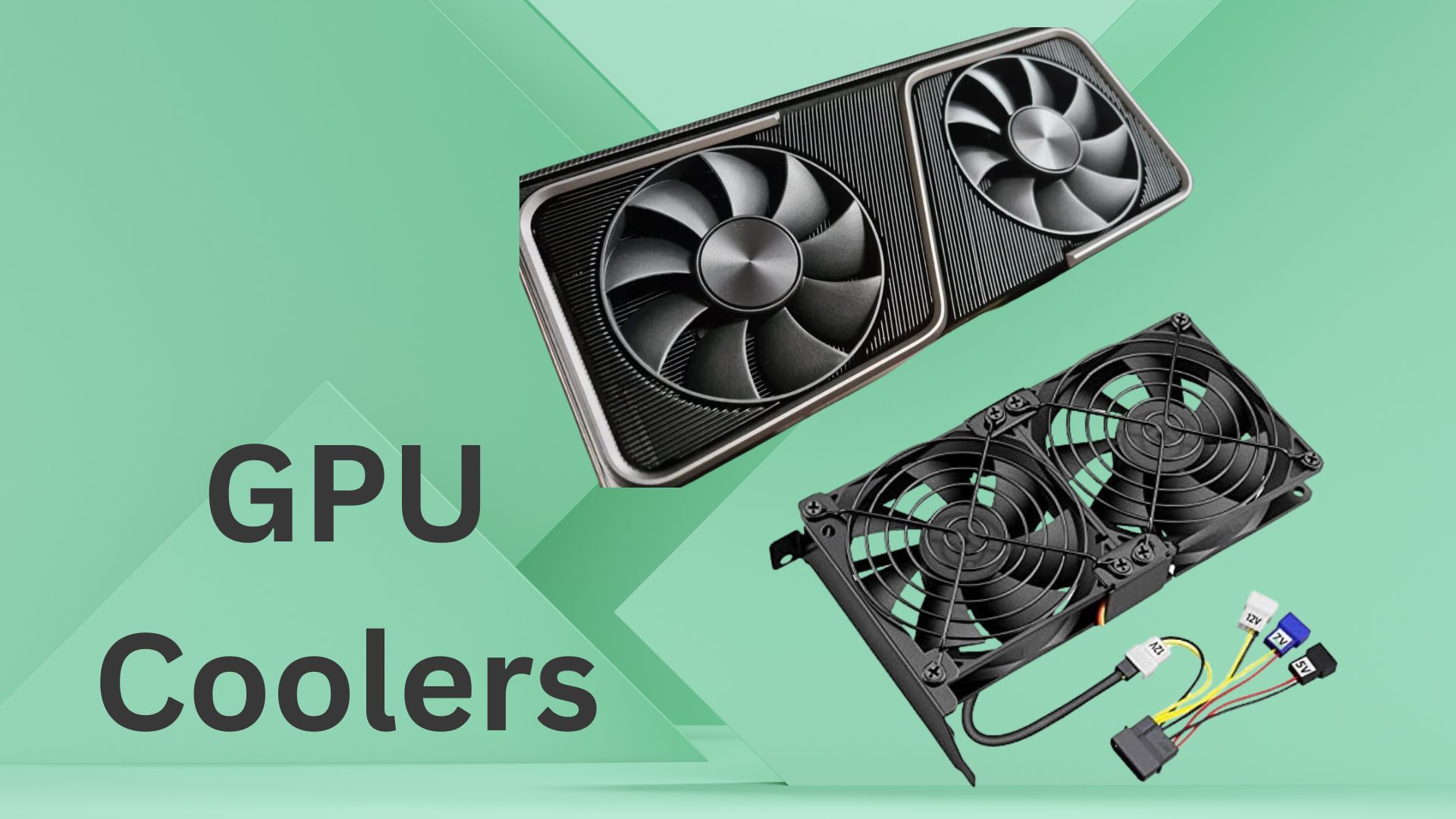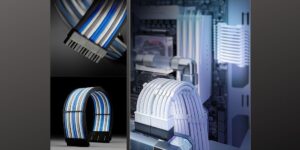A Deep Dive into How GPU Coolers Work |
In the world of high-performance computing, GPUs (Graphics Processing Units) are at the heart of everything from gaming to AI-driven workloads. These powerful components generate immense heat as they process increasingly demanding tasks, making efficient cooling a critical factor in their performance and longevity. Without proper thermal management, GPUs can overheat, leading to reduced performance through thermal throttling, system instability, or even permanent damage. This is why GPU cooling is not just a luxury—it’s a necessity. Various methods are employed to keep these powerhouses operating smoothly, from air and liquid cooling to innovative materials like thermal paste and pads. As technology advances, the landscape of GPU cooling is also evolving, with cutting-edge solutions designed to meet the needs of today’s energy-intensive applications. In this article, we’ll explore How GPU Coolers Work, the factors affecting their efficiency, and the exciting innovations shaping their future.
Why GPUs Generate Heat
To understand how GPU coolers work, it’s essential to first grasp why GPUs generate heat. A GPU is essentially a highly specialized processor designed for parallel computation. Modern GPUs, such as NVIDIA’s RTX 4090 or AMD’s Radeon RX 7900 XTX, feature billions of transistors operating at high frequencies. As these transistors switch states, they consume electrical power and generate heat as a byproduct of inefficiencies in the semiconductor material.
If this heat isn’t effectively dissipated, the GPU can overheat, leading to thermal throttling (reduced performance to prevent damage) or, in extreme cases, permanent hardware failure. This is where GPU coolers come into play.
The Fundamentals of GPU Cooling:
GPU coolers are designed to transfer heat away from the GPU die (the silicon chip) and into the surrounding environment. This process typically involves three key components:
1: Heat Transfer:
Moving Heat Away from the GPU DieThe first step in GPU cooling is transferring heat from the GPU die to a heat-conducting component. This is achieved using a thermal interface material (TIM), such as thermal paste or thermal pads, which bridges the microscopic gaps between the GPU die and the base of the heatsink or cooling block. These materials ensure maximum thermal conductivity by reducing resistance to heat flow.
The heat is then conducted to a heatsink or water block, typically made of materials like copper or aluminium. Copper is preferred for its high thermal conductivity, while aluminium is often used for its balance between conductivity and weight. The goal here is to remove heat as quickly as possible from the small, concentrated area of the GPU die.
2: Heat Dissipation:
Spreading the Heat Across a Larger AreaOnce the heat is transferred away from the GPU die, it must be dissipated over a larger surface area to facilitate cooling. This is where heatsinks play a critical role. A heatsink consists of numerous thin fins or plates designed to maximize surface area while allowing airflow. As heat spreads across the heatsink, it becomes easier for the cooling system to manage.
In advanced cooling systems, heat pipes or vapour chambers are used to enhance heat dissipation. Heat pipes are sealed tubes filled with a liquid that evaporates and condenses to transport heat efficiently. Vapour chambers function similarly but operate in a two-dimensional plane, distributing heat evenly across the heatsink’s base for improved performance.
3: Air or Liquid Cooling:
Transferring the Heat to the EnvironmentThe final step in the cooling process involves transferring the heat from the cooler to the surrounding environment. This is achieved using either air or liquid cooling systems:
- Air Cooling:
In air cooling systems, fans blow air across the heatsink, carrying the heat away and replacing it with cooler air. The efficiency of this process depends on the design and speed of the fans, as well as the airflow within the PC case. Larger, slower-spinning fans are often quieter, while smaller, faster-spinning fans can provide higher cooling performance.
- Liquid Cooling:
Liquid cooling systems use a pump to circulate coolant through a water block attached to the GPU die. The heated liquid flows to a radiator, where fans dissipate the heat into the surrounding air. Liquid cooling is more efficient at handling high thermal loads and often operates more quietly than air cooling systems.
Both methods aim to prevent heat buildup and maintain stable operating temperatures, ensuring optimal GPU performance and reliability.
Types of GPU Coolers:
1: Air Coolers:
Air coolers are the most common type of GPU cooling system, relying on heatsinks and fans to dissipate heat. Here’s how they work:
- Heatsinks: A heatsink is made of thermally conductive materials like aluminium or copper. It is attached to the GPU die via a layer of thermal paste to ensure efficient heat transfer. The heatsink spreads the heat over a larger surface area, making it easier for fans to cool.
- Fans: Fans blow air across the heatsink, carrying the heat away and replacing it with cooler air. The number, size, and design of the fans significantly influence cooling efficiency.
Advantages:
- Cost-effective.
- Easy to maintain.
- Widely available.
Disadvantages:
- Can be noisy, especially under heavy loads.
- Limited cooling efficiency compared to liquid cooling.
2: Blower-Style Coolers:
Blower-style coolers use a single fan to draw air into the GPU and push it out through the back of the card. These coolers are commonly found in manufacturers like NVIDIA and AMD reference designs.
How They Work:
- The fan pulls air over the heatsink.
- The heated air is expelled directly out of the PC case, preventing it from recirculating inside.
Advantages:
- Ideal for compact PC builds with limited airflow.
- Prevents heat buildup inside the case.
Disadvantages:
- Less efficient cooling compared to open-air designs.
- Can be noisier due to the high-speed fan.
3: Open-Air Coolers:
Open-air coolers feature multiple fans and large heatsinks, allowing for more efficient heat dissipation. These are common in aftermarket GPUs from brands like ASUS, MSI, and Gigabyte.
How They Work:
- Multiple fans circulate air over the heatsink.
- Heat is dispersed inside the PC case, relying on case fans for overall ventilation.
Advantages:
- Superior cooling performance.
- Quieter operation due to larger, slower-spinning fans.
Disadvantages:
- Requires good case airflow to prevent heat buildup.
4: Liquid Cooling Systems:
Liquid cooling systems use a liquid (usually a mixture of water and coolant) to absorb and transfer heat away from the GPU. These systems are either custom-built or come as all-in-one (AIO) units.
How They Work:
- A pump circulates coolant through a water block attached to the GPU die.
- The heated liquid flows to a radiator, where fans dissipate the heat.
- The cooled liquid is then recirculated back to the GPU.
Advantages:
- Exceptional cooling performance.
- Can handle high thermal loads, making it ideal for overclocking.
- Quieter operation compared to air cooling.
Disadvantages:
- More expensive and complex to install.
- Potential risk of leaks.
- Requires regular maintenance.
5: Hybrid Coolers:
Hybrid coolers combine air and liquid cooling technologies. They use liquid cooling for the GPU die and air cooling for other components like VRAM and power delivery circuits.
Advantages:
- Efficient cooling for both GPU and ancillary components.
- Quieter than pure air coolers.
Disadvantages:
- Higher cost and complexity.
The Role of Thermal Paste and Pads:
The role of thermal paste and thermal pads is critical in transferring heat from a GPU’s processor to its cooling solution. Thermal paste, a viscous compound, fills microscopic gaps between the GPU die and the heatsink, ensuring efficient heat transfer. Thermal pads, on the other hand, are pre-formed, solid materials often used for cooling other components like VRAM or power delivery modules. Both materials enhance heat dissipation, preventing overheating and maintaining optimal GPU performance. Over time, thermal paste can dry out, so periodic replacement is crucial. Proper application of these materials ensures the GPU operates smoothly under high-performance conditions.
GPU Cooling and Performance:
Efficient GPU cooling is essential for maintaining optimal performance. Graphics Processing Units (GPUs) generate significant heat during intensive tasks like gaming or rendering. Without proper cooling, thermal throttling can occur, reducing performance to prevent overheating. Modern GPUs rely on various cooling solutions, including air cooling with fans, liquid cooling for higher efficiency, and even passive cooling for silent operation. Regular maintenance, like cleaning dust from fans and ensuring proper airflow within the case, can dramatically improve cooling. By investing in effective cooling methods, users can maximize GPU lifespan, maintain consistent performance, and avoid unexpected shutdowns during demanding workloads.
Factors Affecting GPU Coolers Work Efficiency:
Several factors influence how effectively a GPU cooler performs in dissipating heat:
- Type of Cooling Solution: Air coolers rely on fans and heatsinks, while liquid coolers use water blocks, pumps, and radiators. Liquid cooling is often more efficient but requires careful installation.
- Thermal Paste and Pads: Proper application and quality of thermal paste or pads significantly impact heat transfer between the GPU and the cooler.
- Case Airflow: Adequate case ventilation ensures hot air is expelled and fresh air circulates, aiding cooling efficiency.
- Ambient Temperature: A cooler environment allows better heat dissipation, reducing strain on the cooler.
- GPU Load: Higher workloads generate more heat, demanding better cooling performance.
- Dust and Maintenance: Dust buildup on fans and heatsinks restricts airflow and reduces cooling efficiency, necessitating regular cleaning.
Future of GPU Cooling:
As GPUs grow more powerful, their cooling requirements are evolving to handle increased heat output. The future of GPU cooling is marked by innovations aimed at maximizing efficiency and minimizing noise.
- Liquid Metal Cooling: Liquid metal compounds, offering superior thermal conductivity, are being explored for advanced GPUs to replace traditional thermal pastes.
- Hybrid Cooling Solutions: Combining air and liquid cooling technologies provides flexibility and improved heat dissipation for high-performance GPUs.
- Vapor Chambers and Advanced Heatpipes: More GPUs are adopting vapor chambers and enhanced heatpipe designs to improve thermal management across components.
- AI-Powered Fan Controls: Machine learning algorithms may adjust fan speeds dynamically, balancing cooling performance and noise levels more effectively.
- Immersion Cooling: Submerging GPUs in dielectric fluids could become mainstream for extreme cooling needs, especially in data centers and high-end gaming rigs.
- Sustainable Materials: Eco-friendly coolers made with recyclable materials may address environmental concerns while delivering efficient performance.
Conclusion:
GPU cooling is a cornerstone of maintaining optimal performance and extending the lifespan of graphics cards. As GPUs become more powerful and heat-intensive, effective cooling solutions are no longer optional—they’re essential. From traditional air coolers and liquid cooling systems to advanced technologies like vapour chambers and hybrid designs, the evolution of GPU cooling reflects the growing demands of modern applications. Proper maintenance, such as cleaning dust and applying quality thermal paste or pads, ensures that cooling systems function at their best. Looking ahead, innovations like liquid metal cooling, AI-powered fan controls, and immersion cooling hint at a future where efficiency, sustainability, and silence are prioritized. By understanding and investing in effective cooling methods, users can unlock the full potential of their GPUs, avoid thermal throttling, and enjoy seamless performance even under the most demanding workloads. Cooling isn’t just about performance—it’s about protecting your investment.
FAQs
Q1: What is the purpose of a heat sink in GPU coolers?
A: Heat sinks in GPU coolers absorb heat from the GPU and increase the surface area for efficient heat dissipation.
Q2: How do fans contribute to GPU cooling?
A: Fans blow air over the heat sink, removing heat and carrying it away from the GPU.
Q3: What is a thermal interface in GPU coolers work?
A: The thermal interface, often a thermal paste or pad, ensures optimal heat transfer between the GPU and the heat sink.
Q4: Can GPU coolers be upgraded or replaced?
A: Yes, GPU coolers can be upgraded or replaced with aftermarket solutions to improve cooling efficiency and reduce GPU temperatures.
Last Updated on 27 January 2025 by Ansa Imran

Haleema is an experienced PC builder who has been building PCs for the last couple of years. He has written several articles on PC components, including power supplies and graphics cards. In his articles, he explains how to check the compatibility of a power supply with a GPU and what things to consider when pairing them.







